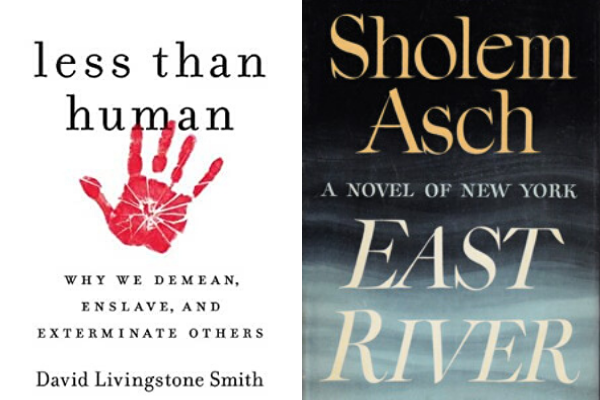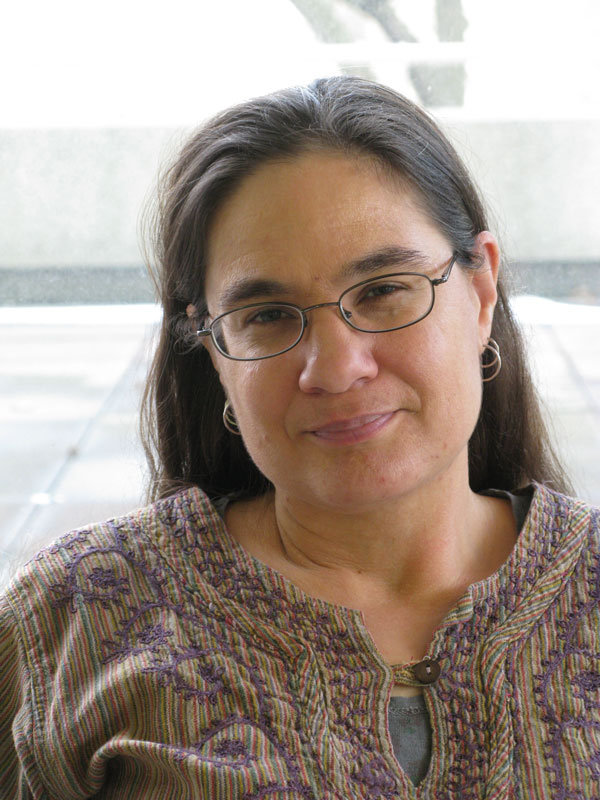By Lisa Nielson, Anisfield-Wolf SAGES Fellow
Lisa Nielson is the Anisfield-Wolf SAGES Fellow at Case Western Reserve University. She has a PhD in historical musicology, with a specialization in Women’s Studes, and teaches seminars on the harem, slavery and courtesans.
I was introduced to “Less than Human” last fall when I had the pleasure of hearing David Livingstone Smith speak at the 2012 Anisfield-Wolf Book Awards ceremony and at Case Western Reserve University the next day. His presentation was riveting, and I felt myself vacillating between awe at the breadth of his work and shock at the horror of what humanity has done through dehumanization.
Judging from the taut silence as the awards audience of 800 heard Smith speak, they had a similar reaction. Listeners occasionally gasped as Smith told the story of Ota Benga, a Batwa (“pygmy”) tribesman, who was bought from a slave merchant in what was then called the Congo Free State and put on exhibit at the St. Louis World’s Fair of 1904.
Eventually, Benga was put on display at the newly opened Bronx Zoo, sharing a cage with an orangutan. Black clergy protested, and, “buckling under the pressure of controversy, zoo authorities released Ota Benga from his cage, and allowed him to wander freely around the zoo, where jeering crowds pursued him,” Smith said.
The story ends with Benga succumbing to madness, and putting a bullet through his own heart.
In reflecting on this anecdote and the book, I was struck by Smith’s observation that for all that has been written about genocide, war, and dehumanization, little scholarship centers on why and how. Why have we not studied this process? Does our discomfort prevent us? Or are we afraid of what we might find?
Using an interdisciplinary approach, Smith not only goes into the philosophical and historical development of modes of dehumanization, but how religion, science and biology have been used to bolster both the practice and justification of demeaning others. By delving into how humans identify and react to difference, he also reflects on the cognitive and emotional processes we use.
Perhaps the most compelling evidence for me was his inclusion of research into human biology, cognitive science and the animal world. His synthesis of the biologic and psychological impulses behind our ability to dehumanize in comparison to similar species, such as chimpanzees, made a great deal of uncomfortable sense. He finds: 1) we are biologically wired to categorize strangers as “other”, 2) because of our propensity to order our world according to our perception of kinds and essences, there is a definable process we adhere to when categorizing who is “us” and “not us,” 3) as a result, we are all capable of extreme violence or cruelty given the right push, and 4) we are unique in the animal kingdom for so doing.
Smith doesn’t stop there. He confronts us with the reality that perpetrators of genocide are not outliers or “monsters” but often just like us. Drawing on Hannah Arendt’s theory of the “banality of evil,” he points out that we all have the capability to dehumanize, and argues that we must work to recognize and refute these impulses if we are to rise above them. Since these are complex social and psychological constructs, the same ability that allows us to dehumanize can also help us overcome our innate, and arguably submerged, hard-wired reactions to difference.
The evidence Smith uses to craft his theory shows that our propensity to dehumanization comes out of a complex of biology, social pressure, psychology around real and perceived danger, politics, and propaganda. Yet, our ability to reflect and make the better choice offers some hope for change. Such change, however, requires effort. As Smith notes in his conclusion, we have barely tried.
As the first Anisfield-Wolf SAGES Fellow, I have worked to incorporate explorations of race and diversity into my teaching. When I designed a class on world slavery, it allowed me to introduce books that have won the prize. This spring, I added Smith’s book to my reading list, and began the first week of class with his chapter on slavery, “The Rhetoric of Enmity.”
Student reaction has been profound. The students immediately took to his ideas and incorporated them into their essays and final projects. Some have offered insightful critiques and suggestions for expanding on his theory, while others have used his ideas as a basis from which to interrogate past and present constructions of race, class, sexuality and gender.
Though Smith doesn’t focus specifically on slave systems or gender in “Less than Human,” his outline of the process of dehumanization has changed the way I think about and teach slavery. Is slavery inherently a dehumanizing process, through the fact of being owned? Are there slave systems where this is not the case? How can dehumanization be applied to issues of gender and sexuality? And, in considering the continuation of dehumanization tactics today: What more can I do to help my students critically assess the social and cultural messages they receive?
If we accept that we are all prone to certain kinds of essentialist thinking, it is vital that we give students every tool to challenge their own assumptions, and to listen empathetically to others. This type of intellectual discipline takes a lot of effort, and we need people who can and are willing to do the work. My students at Case have that will and ability, and they inspire me to hope.



